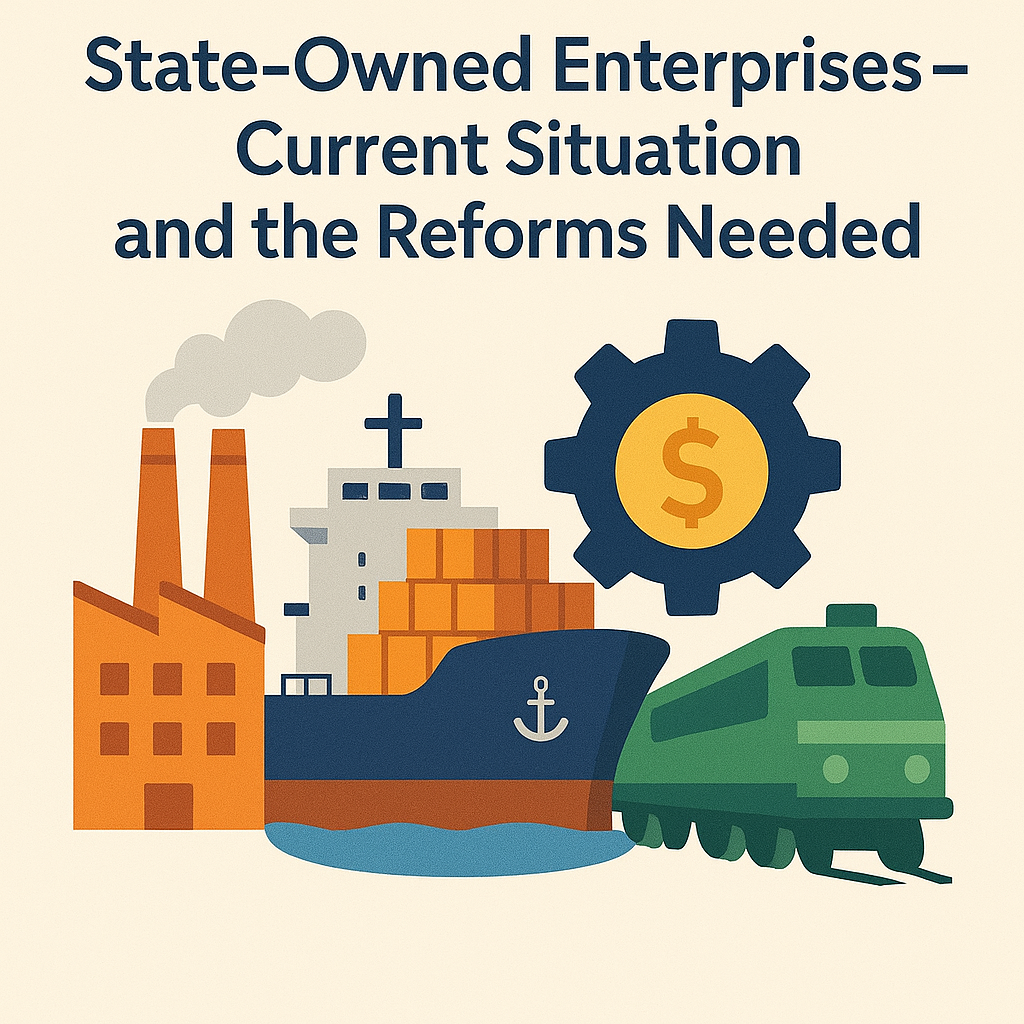
Pakistan’s state-owned enterprises (SOEs), once envisioned as engines of economic growth and social equity, now represent a chronic fiscal liability, draining public resources and stifling competitive markets. With over 200 SOEs operating across sectors like energy, aviation, banking, and heavy industries, these entities collectively incurred losses exceeding PKR 500 billion in 2022-23, equivalent to 1.2% of GDP. Despite repeated bailouts, their inefficiencies persist, underscoring an urgent need for structural reforms to align them with contemporary economic realities. The status quo—marked by political interference, opaque governance, and operational lethargy—demands a systemic overhaul to transform SOEs from burdens into catalysts for sustainable development.
The financial health of Pakistan’s SOEs is alarming. A 2023 report by the Ministry of Finance revealed that 85% of commercial SOEs are loss-making, with the energy sector alone accounting for 65% of total losses. Pakistan International Airlines (PIA), emblematic of the crisis, has accumulated debts surpassing $4 billion, necessitating annual subsidies of PKR 40-50 billion to stay operational. Similarly, Pakistan Steel Mills, inactive since 2015, continues to cost taxpayers PKR 20 billion annually in worker salaries and maintenance. These deficits are exacerbated by guaranteed government bailouts, which distort market discipline and divert funds from critical public services. The fiscal burden extends beyond direct subsidies: SOEs consume nearly 40% of federal guarantees, heightening sovereign risk and crowding out private investment.
Governance failures lie at the core of this dysfunction. Board appointments are often politicized, with leaders selected for loyalty rather than expertise. A 2022 State Bank of Pakistan study found that 70% of SOE directors lacked relevant sector experience, contributing to poor strategic decisions. Weak oversight mechanisms further enable mismanagement. For instance, the Auditor General’s 2021-22 report identified PKR 220 billion in irregular expenditures across SOEs, including unauthorized perks and inflated procurement contracts. The absence of performance-linked incentives compounds these issues: executives face no repercussions for losses, while innovation remains unrewarded.
Operational inefficiencies, rooted in legacy structures and unionized labor resistance, further erode competitiveness. Overstaffing plagues entities like Pakistan Railways, which employs 70,000 workers to manage a fleet smaller than that of India’s Konkan Railway, operated by just 4,000 staff. Outdated technologies persist due to underinvestment—thermal power plants run at 60% capacity due to poor maintenance, worsening energy shortages. Meanwhile, SOEs dominate sectors like banking (National Bank of Pakistan) and insurance (State Life), stifling competition and deterring foreign entrants.
Reforming this ecosystem requires a multi-pronged strategy, beginning with rigorous privatization. While politically contentious, strategic divestment can unlock capital and expertise. Malaysia’s Khazanah Nasional offers a blueprint: its phased privatization of Malaysia Airlines, coupled with strict performance covenants, reduced losses by 50% within three years. Pakistan could prioritize non-strategic SOEs (e.g., hotels, utilities) for outright sale, while retaining golden shares in critical sectors to safeguard national interests. Partial privatization, as seen in Saudi Arabia’s Aramco IPO, could also attract investment without ceding full control.
Simultaneously, corporate governance must be depoliticized. Implementing the SOE Act 2023—which mandates independent boards, merit-based appointments, and international accounting standards—is critical. Singapore’s Temasek model, where a holding company manages SOEs under commercial principles with full autonomy, demonstrates how arm’s-length oversight enhances profitability. Performance contracts, tying executive compensation to KPIs like cost reduction and service delivery, could instill accountability. Vietnam’s equitization program, which links state funding to SOE restructuring milestones, offers another adaptable framework.
Transparency mechanisms are equally vital. Publishing audited financial statements biannually, as mandated by the Public Finance Management Act, would deter malfeasance. Digital platforms, such as Pakistan’s CPFAT portal for procurement, should be expanded to real-time expenditure tracking, emulating India’s Central Public Sector Enterprises portal. Citizen oversight, through social audits and mandatory public hearings, could further enhance accountability, as demonstrated by South Africa’s SOE transparency reforms.
Finally, transitioning to performance-based management is essential. SOEs must adopt private-sector practices, such as lean operations and customer-centric models. Egypt’s restructuring of its state-owned banks—which involved branch rationalization and digital transformation—reversed a decade of losses within five years. Pakistan’s SOEs could similarly leverage PPPs for infrastructure projects, reducing fiscal strain while improving service delivery.
The cost of inaction is prohibitive. SOE losses directly contribute to Pakistan’s debt crisis, diverting funds from education and healthcare. Conversely, successful reforms could save up to PKR 1.2 trillion annually, enough to finance the Benazir Income Support Programme twice over. By embracing privatization, governance modernization, and operational agility, Pakistan can repurpose its SOEs into vehicles of efficiency and growth—fulfilling their original mandate as pillars of the public interest.
This article was published on publicfinance.pk.
